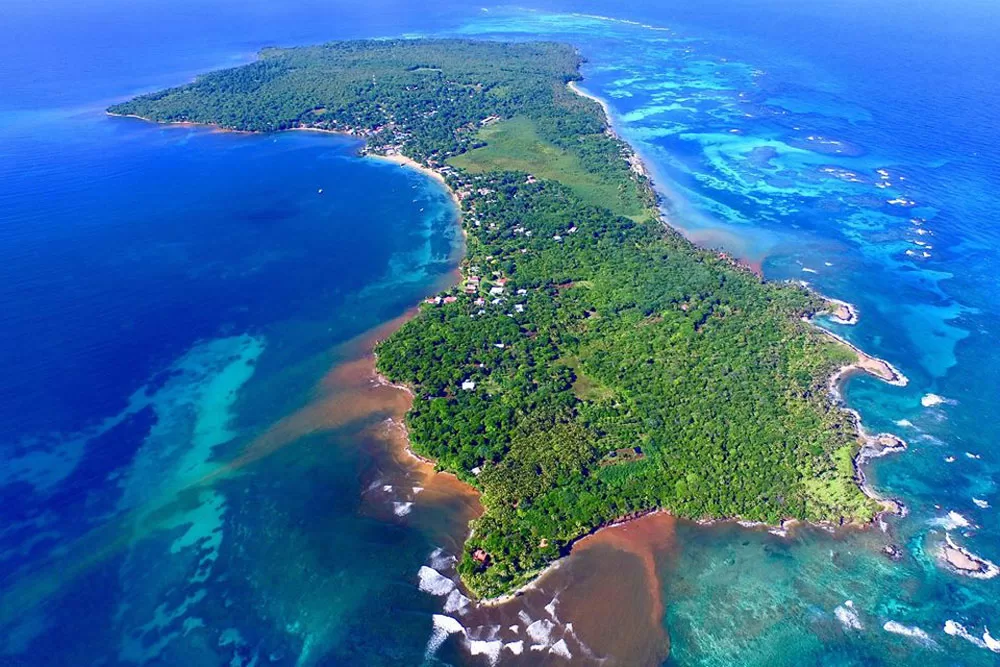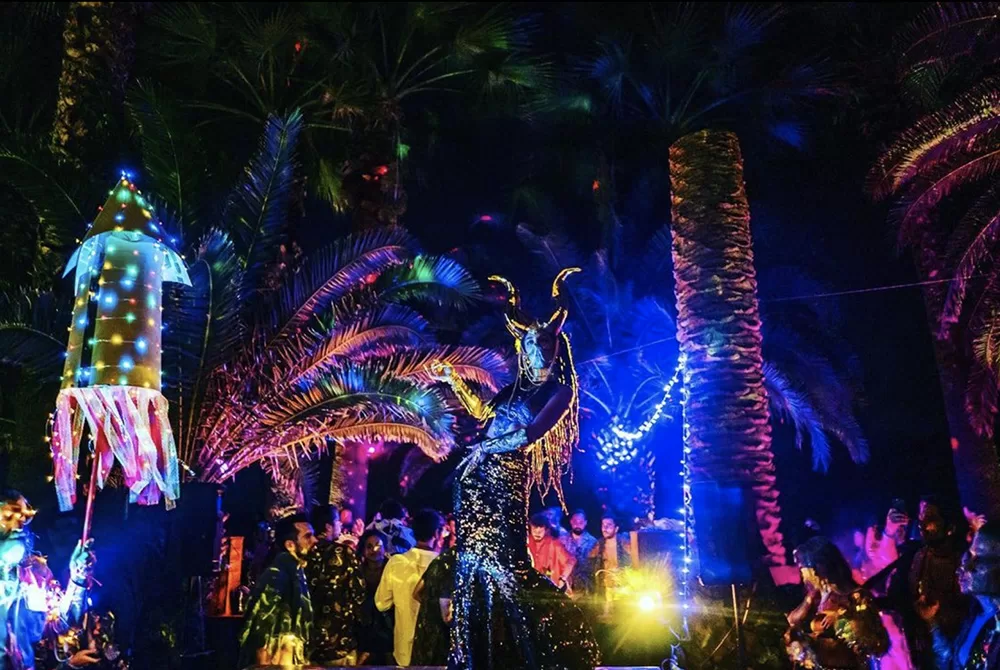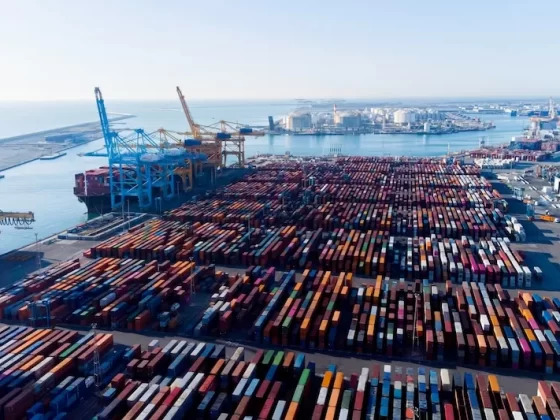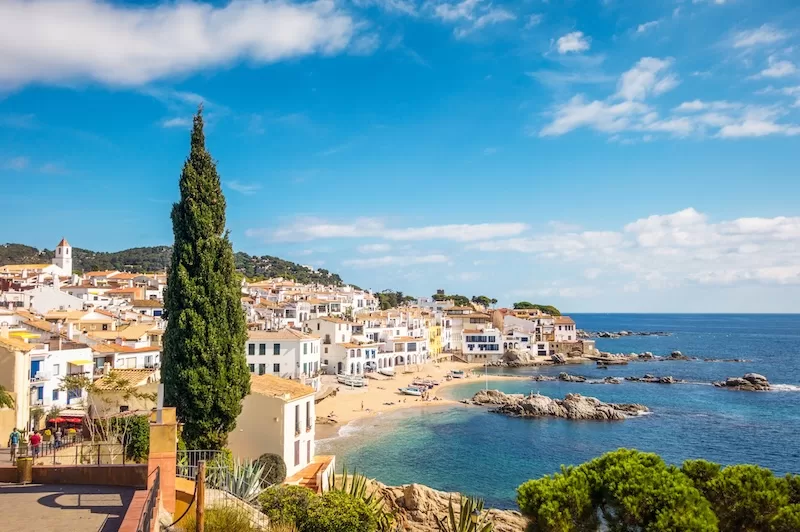Around this time of year, depending where you are, you might see geese flying in formation overhead, headed to warmer climes for the winter. We all know that countless creatures have a biological impulse that compels them to migrate, and that many of them undergo physical changes when the time comes to move.
But what about humans—are we also programmed to travel? If not, then what possessed our ancestors to jump into rickety wooden vessels and sail the seven seas when they had plenty of resources on land?
Why are billionaires like Elon Musk so hellbent on cramming themselves into metal cans and propelling themselves into space? Musk doesn’t need to visit Mars, just like Christopher Columbus didn’t need to sail across the Atlantic. So why bother?
Neanderthals were around for hundreds of thousands of years and they didn’t make it past Europe and Central Asia. Only a few other creatures—ants, cockroaches, starlings—are as globally dispersed as humans.
Birds and mammals migrate for a specific reason: warmer weather, more reliable food sources, mating partners. They don’t relocate on a whim. But humans do.
Read more like this: Is Travel the Real Fountain of Youth?
The Natural Instinct to Migrate
Does our genetic code push us to migrate? Or is it more of an individual thing? Is the impulse to travel hardwired into some people, but not others?
Some years ago, a group of researchers came together to analyze the DNA of more than a million people with European ancestry. It was one of the most extensive studies of its kind, using data gathered by the ancestry company 23andMe and the UK’s Biobank.
Participants were asked about four risky behaviors: their tendency to drive faster than the speed limit; their average weekly alcohol consumption; the number of sexual partners they’d had; and whether or not they’d ever smoked tobacco.
They were also asked to place themselves on a scale running from “cautious” to “adventurous.” Examining participants’ responses alongside their DNA, the scientists found 124 variations within our DNA, or single-nucleotide polymorphisms (“SNPs”), related to risk-taking.
Why is this relevant? Well, leaving your homeland—waving goodbye to the people you love, turning away from your own society, going to live somewhere else, with different people and a different way of life—that’s a mighty big risk.
Even if you’re only going backpacking—because you want to try new activities and experience foreign cultures—that might come from a penchant for adventure. The scientists found 49 SNPs linked to adventure.
This study suggests that taking risks and seeking adventure do have a genetic basis. People might move abroad because they’re compelled by a predilection for risk-taking written into their DNA. Our genes encourage some of us to take risks, and these risks might include migrating.
So, have scientists found a gene which isn’t only related to risk in general, but to the specific risks involved with travel? Well, sort of…
Some People Are Risk-Takers
The gene in question is known as DRD4-7R. It’s a clunky name that reminds me of the beloved Star Wars droid C3PO. Fortunately for us, it has a more palatable nickname: The Wanderlust Gene.
It may explain why some of us feel an urge to explore while our peers remain at home, living in the same old place, with the same old job, year after year, decade after decade. It could explain why some people are happy to lay on a beach during their holidays, while others prefer to bungee jump or swim with sharks.
DRD4 controls the amount of dopamine released into our brain. Most people trigger this pleasure response by, for instance, eating chocolate, listening to stand-up comedy, or stroking a cat. Dopamine is released and they experience momentary delight.
For the one in five people who possess the Wanderlust Gene, these small things won’t ever suffice. They need more! More chocolate. More thrills. More adrenaline. More adventure.
But for the one in five people who possess the 2R or 7R variants of the Wanderlust Gene, these small things won’t ever suffice. They need more! More chocolate. More thrills. More adrenaline. More adventure.
To satisfy their cravings and feel the kind of dopamine rush other people experience in their daily lives, these individuals must take bigger risks. Compelled by curiosity, restlessness, and passion—they might take drugs, gamble, or start a business.
They might try new foods, immerse themselves in new cultures, or visit new places. They might embrace change, adventure, and travel. And, having caught the travel bug, they might decide to relocate for good.
This is the theory. But does it happen in the real world? Do individuals or groups who have the Wanderlust Gene, actually move further afield? One study suggests they do.
The Distances People Travel
We’ve already mentioned that about one in five people have the Wanderlust Gene. Of course, the gene is more prevalent in some populations than others. And researchers from Harvard and Boston University set out to find a connection between the gene and the distances people traveled before settling down.
They found that the ancestors of Colombians had travelled some 30,000 kilometers: out of Africa, into Asia or Europe, across into North America, then down into South America. When they were tested, the R2 or R7 alleles appeared sixty-two times in every two hundred samples—more than 50 percent greater than the global average.
The Surui people, who live in the Brazilian Amazon, had moved further than anyone else in the study, more than 32,000 kilometers. They also had the highest frequency of R2 and R7 alleles—more than double the global average.
The study showed a strong linkage: peoples who had travelled the furthest from Africa were more likely to possess the Wanderlust Gene. The authors concluded that the presence of the gene helped explain why certain groups spread out so far, so quickly.
It compelled carriers to take risks, explore new places, and live in new locations. This is why people sail out into unchartered oceans without knowing what’s on the other side. And why some of our contemporaries launch rockets toward Mars—compelled by an impulse hardwired into their DNA.

Without this impulse, we might all still be living in Africa. The Wanderlust Gene transformed our relationship with the world. It made us who we are today.
But just because a person has a gene that could compel them to migrate doesn’t mean they’ll definitely move. Again, about one in five people have the Wanderlust Gene, but only 3.6 percent of us—less than one in 25—have decided to live abroad.
Our nature might be encouraging us to move, but we’re not slaves to our DNA. Other factors—such as nurture and necessity—might convince us to remain where we are.
Migration can help a lot of people. But what if restrictions on movement physically hurt the people who wanted to move?
One study, examined the Ariaal people—a group of pastoralists and longtime nomads in Northern Kenya. In the early 1970s, several of their clans chose to settle down.
Thirty-five years down the line, their members were tested. Every group studied was classified as “underweight.” Those who lived in sedentary communities and did not possess the Wanderlust Gene were the best-nourished—with a body mass index (BMI) of 18.2.
But those who lived in sedentary communities and did possess the Wanderlust Gene were the most malnourished: They had BMIs almost an entire point short of the “healthy” threshold.
A New Era of Nomadism
Carriers of the Wanderlust Gene who were still nomadic were also underweight—but only by half a point. This suggests that when we restrict people’s ability to move, they might lose weight and become undernourished, if they also happen to possess the Wanderlust Gene.
Health experts say that underweight people may be at greater risk of malnutrition, osteoporosis, decreased muscle strength, hypothermia, and lowered immunity, and more likely to die early. In addition, underweight women are less likely to become pregnant.
It’s only one study, and it only looked at one group of people. But if the effects are found to be widespread, then the consequences would be stark. It would imply that stopping people with the Wanderlust Gene from migrating would be a kind of physical abuse.
You might argue that this is an oversimplification—that we’re not defined by a single gene, but by a much larger amount of genetic code, as well as our lived experiences. This is true. But this genetic code comes together to determine our overall personalities.
And our personalities can also affect our propensity to migrate. These days, scientists classify our characteristics according to the “Big Five” dimensions—extroversion, agreeableness, conscientiousness, neuroticism, and intellect.
They’re not all particularly relevant: There doesn’t appear to be much of a relationship between migration and either conscientiousness and neuroticism. But the other dimensions can help cultivate a love of travel. In the USA, people who are less agreeable are more likely to relocate.
But the two most significant factors, on a global scale, appear to be extraversion and open-mindedness. Extroverts and the open-minded are more likely to move than their opposites. But these are generalizations—there are plenty of exceptions to the rule.
I’m introverted and I’ve spent my adult life moving from place to place. There are several reasons for introverts to migrate: To move away from prying neighbors, to search for places where people are less intrusive, and to find the peace and solitude they crave.
These types of people—people who’ve caught the travel bug, who possess that Wanderlust Gene—can also form new nomadic societies.
A large, global group has emerged in recent years: digital nomads. Some decided to take a short “work-cation” abroad. Some are serious backpackers, constantly on the move—only stopping to open their laptops and render a little work. They could be “Vanlifers,” traveling about in a mobile home, perhaps with their partners, pets, or children.
What unites them is a sense of being location-independent—able to work from wherever and move whenever. This new traveller community is a varied bunch, but they tend to share a few characteristics. One study found that three-quarters were self-employed.
Digital nomads were found to be far more satisfied with their incomes compared to their sedentary peers—in part because they lived in countries where the cost of living was lower, and in part because they cared less about material possessions and cold hard cash.
More people are becoming digital nomads because of a variety of factors encouraging them to migrate. The first is technology: You couldn’t have digital nomads without the digital infrastructure.
Read more like this: 7 Ways Digital Nomads Are a Problem (and How They Can Do Better)
The second factor is culture: A new nomadic culture is emerging, as digital nomads begin to congregate in popular spots—forming new global networks and local communities, offering each other support, providing companionship, and encouraging peers to visit new destinations.
A Global Community Emerges
I witnessed this myself when I arrived in Bulgaria in 2018. I‘d never heard of a digital nomad. That changed when I discovered a chain of co-working spaces—offices and lounges where digital nomads could work, collaborate and socialize.
They offered hot desks, fast WIFI, coffee, organized outings, movie nights, and a co-living service—arranging shared accommodation for their members. I never joined myself. I didn’t see the point in paying the fees when I could work at home for free.
But I did meet some of the coworkers. Once or twice a week, they turned up in their bright orange shirts, and challenged us—a regular bunch of expats—to a game of football. I soon noticed a pattern: A fair few of these digital nomads only came for the summer—to trek and cycle in the Pirin mountains. They spent their winters in Thailand.
It was as though they were encouraging each other on—enjoying the same two locations, at the best times of the year—escaping from the frigid Bulgarian winters, and the sweltering Thai summers, in a fashion which was reminiscent of the Kazakh horsemen.
So it wasn’t just a matter of technology. A community had formed, which was nurturing these nomadic workers. And it certainly wasn’t unique: Other communities exist in different locations. And they also exist online—on sites such as Nomads.com, and on social media.
The Future of Remote Work and Travel
Employers can be a third factor. While most digital nomads are freelancers, the boom in the last few years has been driven by companies that allow their workers to work remotely.
It’s in their own self-interest: They get happy, productive staff—people who’ve been reinvigorated by life on the road.
They save money on office expenses, and they get to recruit from a global talent pool.
When Flex Jobs looked into the companies that only posted listings for jobs with “Zero time in the office,” the Wikimedia Foundation topped the charts. They were joined by the likes of GitHub, Quora, and Study.com.
Spotify believes that, “Work isn’t somewhere you go, it’s something you do.” It’s an ethos that’s paying dividends: Quit rates at Spotify have since fallen 15%. And when Airbnb announced that their workers can work wherever they like, 800,000 people logged on to the careers page!
It’s not just the business community that’s nurturing nomads. Certain governments are in on the act. Since 2021, more than 60 countries have introduced some kind of visa for digital nomads. That’s nearly one of every three nations on Earth.
These are hardly examples of free movement in a borderless world. Many require nomads to prove that they have a certain monthly income, private health insurance, or a master’s degree. Still, the fact that some people are moving about the world and being welcomed, nurtured even, does provide reason for hope.
———————
UK-born Joss Sheldon is a longtime expat and the author of six novels and two non-fiction books, including, most recently, Freedom: The Case for Open Borders, from which this article is excerpted. Find him on X.










